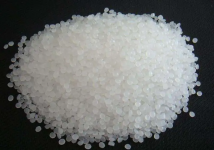read: 589 time:2025-06-13 06:57:52 from:化易天下
Understanding why acetic acid is stronger than phenol involves delving into the chemical structures and the resulting behaviors of these two compounds. This article will explain in detail the factors that contribute to the difference in acidity between acetic acid and phenol, addressing their molecular structure, resonance stabilization, and inductive effects.
The acidity of a compound is directly related to its ability to donate a proton (H⁺). Acetic acid (CH₃COOH) is a carboxylic acid, while phenol (C₆H₅OH) is an aromatic alcohol. The carboxylic group (-COOH) in acetic acid is more effective at releasing a proton compared to the hydroxyl group (-OH) in phenol. This difference is a key reason why acetic acid is stronger than phenol.
Another crucial factor that determines the acidity of a compound is the stability of its conjugate base. After acetic acid donates a proton, it forms an acetate ion (CH₃COO⁻), which is stabilized by resonance. This resonance allows the negative charge to be delocalized between the two oxygen atoms, making the acetate ion more stable. On the other hand, when phenol loses a proton, it forms a phenoxide ion (C₆H₅O⁻). Although phenoxide is also resonance-stabilized, the resonance involves the aromatic ring, which is less effective in stabilizing the negative charge compared to the resonance in acetate. This difference in stabilization is another reason why acetic acid is stronger than phenol.
Inductive effects also play a significant role in determining acidity. In acetic acid, the carbonyl group (C=O) has an electron-withdrawing effect, which further stabilizes the negative charge on the acetate ion after the proton is lost. This electron-withdrawing effect increases the acidity of acetic acid. In contrast, phenol lacks a strong electron-withdrawing group. Although the phenyl group (C₆H₅-) can slightly withdraw electrons through the aromatic system, this effect is weaker than the electron-withdrawing capacity of the carbonyl group in acetic acid. Therefore, acetic acid exhibits greater acidity than phenol.
In summary, the question “why is acetic acid stronger than phenol” can be answered by examining the molecular structure, resonance stabilization, and inductive effects of these compounds. Acetic acid's stronger acidity is due to the effective resonance stabilization of its conjugate base (acetate ion) and the electron-withdrawing inductive effects of its carbonyl group. In contrast, phenol’s conjugate base is less stabilized by resonance, and it lacks strong electron-withdrawing groups, making it a weaker acid than acetic acid. Understanding these factors provides clear insight into why acetic acid is a stronger acid compared to phenol.

Jincheng Petrochemical's 300000 ton polypropylene plant successfully trial production, 2024 polypropylene market analysis

The ABS market remains sluggish, what is the future direction?

Market differentiation of bisphenol A intensifies: prices rise in East China, while prices generally decline in other regions

The production method and process flow of silicone acrylic lotion, and what are the common raw materials